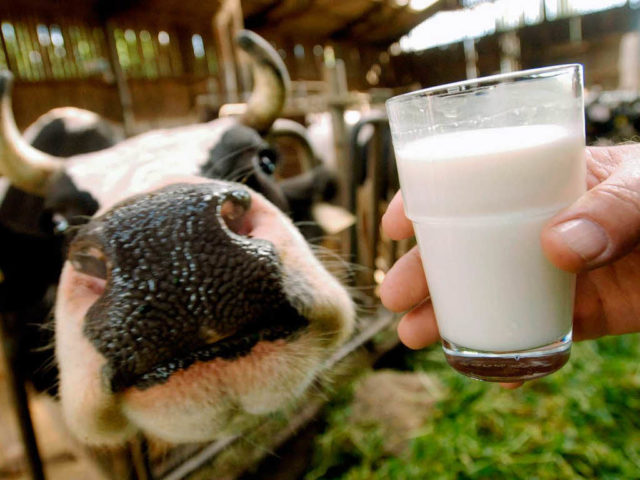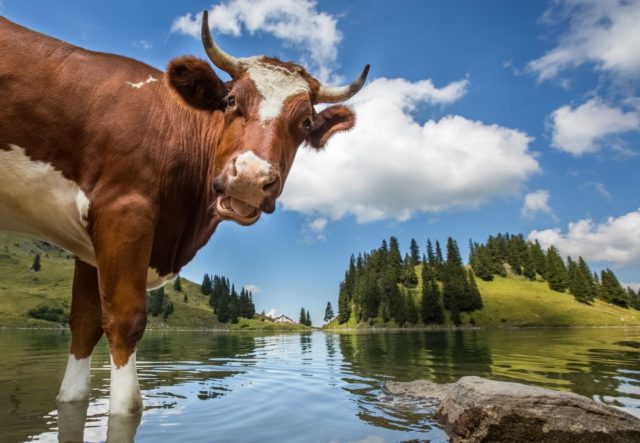Content
A combination of factors affects the milk production of cows at any of the periods of its life. Conventionally, the factors affecting the milk production of cows can be divided into three main groups: genetic, physiological and environmental. Their influence can be positive and negative. A person has direct methods of influence on some levers, but he cannot change others.
Genetic factors affecting milk production of cows
Each of the types of productivity of a living creature can be described by complex mechanisms of interaction of heredity (those same genetic factors) and various environmental conditions.
It is heredity that determines the conditions under which the newborn organism will develop.
As you know, even having the same environmental conditions (we are talking mainly about keeping animals), in different individuals the formation of physiological signs is carried out in different ways, this is due to the peculiarities of their genetics.
The variability of hereditary traits that have a direct impact on the milk performance of a cow varies in the following ranges:
- milk yield in the range of 20-30%;
- fat content of milk - 4-10%;
- the content of protein compounds in the product is 3-9%.
In a long process of evolution, domestic cattle have acquired many biological and economic qualities that are highly valued by farmers. They also include effective milk production as well as the ability to produce high quality milk. This allowed biologists to differentiate this common family into several breeds based on their characteristics.
The most productive from a biological point of view are considered special breeds of "dairy" cows, which were artificially bred relatively recently. These include:
- black and motley;
- Dutch;
- red steppe;
- Holstein;
- Ost-Frisian and many others.
According to the conclusions of V.A. Kinzel (Candidate of Agricultural Sciences), the milk production of cows is directly dependent on various genotypic factors. There was also an increase in the milk yield of cows, which belong to the new intrabreed types.
Environmental factors affecting milk production of cows
The most significant environmental factor that affects the milk production of cows is nutrition. Milk yield increases if food:
- balanced;
- protein;
- regular.
An increase in the fat content of milk is facilitated by feeding cows with sunflower, flax and cotton cakes. To reduce fat content by 0.2-0.4%, hemp, poppy and rapeseed cakes should be included in the cow's diet. This pattern is explained by the difference in the contained vegetable oils:
- quantity;
- composition;
- properties;
- quality.
As for the conditions of detention, the quantity and quality of milk produced is influenced by factors such as:
- temperature;
- gas saturation;
- humidity.
Among the negative factors, a high noise level can be distinguished. It is called by machines, tractors and mechanisms that often work on a farm.
An increase in milk yield is observed during autumn and winter calving due to the bimodality of the lactation curve, when the first half of lactation is carried out in the stall, and the second - in the pasture.
Udder massage also has a beneficial effect on the milk production of cows. It improves local blood circulation and also stimulates the flow of nutrients to this area. Special attention is paid to the milking technique, which is able to ensure active milk flow and create such conditions in the udder that will facilitate the subsequent secretion of milk. Modern practice distinguishes between two milking methods:
- manual, which involves two quarters of the udder;
- a machine that affects all parts of the udder at once is considered more effective.
Physiological factors affecting the milk production of cattle
Factors affecting the milk production of livestock, which are of a physical nature, include:
- the age of the animal;
- duration of feeding;
- pregnancy;
- individual sexual cycle;
- dead wood;
- milk delivery rate;
- biological structure of the udder;
- service period.
Age of cows... Great importance is attached to the age of the cow at the time of her first calving. Experienced farmers know that with early insemination of cows weighing less than 250 kg, their growth and physiological development is inhibited. From the consequences of this process, one can single out the gradual crushing of cows, due to the birth of small calves, as well as a decrease in dairy production. When milked, such cows are able to equalize the overall indicators, however, losses on the dairy product during lactation are not compensated. That is, high milk yield can be expected, but after a while and at a more mature age.
Late insemination of cows also has quite a few disadvantages.... This is due to the high consumption of feed and the disproportionately small amount of calves and milk, which is absolutely inexpedient from an economic point of view. As a rule, late insemination of heifers occurs due to improper conditions of their keeping at a young age.
Ideally, the first insemination should be carried out 16-18 months after the birth of the animal. Moreover, they rely not only on his age, but also on the animal mass. In many countries, the height of the cow is taken as a fundamental factor, as, for example, in the case of the Holstein breed. For heifers of this breed, readiness for insemination occurs when the height at the withers is 127 cm. It is the height that determines the ease and simplicity of calving better than any other physiological indicators of the animal.
Duration of lactation... On average, the normal feeding period is 305 days. A longer period is characteristic of late fertilization of cattle after calving. It is advisable to calve a cow at the same time with an interval of 12 months. If lactation is shorter than the normal period, but the dry period is healthy, then the cow gives more milk than with prolonged lactation, but the same dry period.
Service period, pregnancy and dead wood. According to veterinary reference books, the optimal duration of the service period is from 40 to 80 days. If it takes longer, then it negatively affects the milk production of cattle. With a natural calculation, on average, a farmer loses up to 15% of milk during a long service period.
In turn, the dry period should last at least 50 days, but not longer than 60.During the first 25 days of pregnancy, when the fetus does not require a large amount of nutrients, the milk production of the cow does not change. Starting from the second half, milk yield is significantly reduced, as the need for intensive nutrition of the fetus increases.
Biological structure of the udder... As veterinary practice shows, cows with tub-shaped or cupped udders have the highest milk productivity. Their milk yield is on average 20% higher than that of heifers with round or primitive udders.
Animal weight... Large cows, provided they are well fed and maintained, show higher milk yield. This is due to their ability to consume more feed, which is quickly converted into milk. In herds, highly productive cows have a live weight that is higher than average. However, a regularity is not always traced between the gain in weight of livestock and an increase in its milk productivity. This relationship works as long as the cow meets the conditions of the dairy type. Ideally, the milk yield of cows during lactation should be approximately 8-10 times more than their live weight, which is the best confirmation of the dairy type of the cow.
Conclusion
These factors affecting the milk production of cows, which are of a genetic, physiological and natural character, are far from the only ones that matter in farming. Milk yield is influenced by the life schedule of the cattle, their health status, and also the conditions of circulation. The coarse ratio significantly affects milk production, reducing it by 20-30%.












